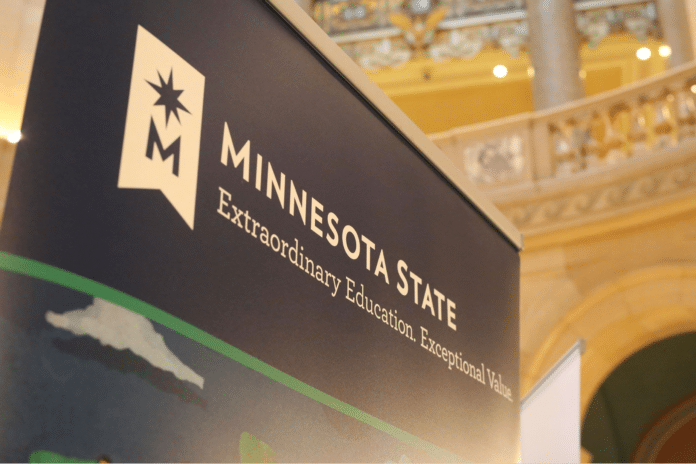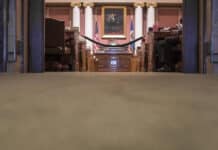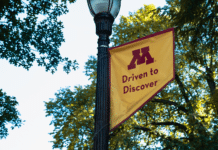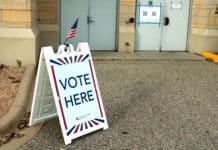
It appears that higher education in Minnesota is slated to be jolted by its own internal “awokening.” For now better than two decades what’s called the Minnesota Transfer Curriculum has been quietly doing what it was supposed to do. Designed to assure greater uniformity of instruction, it has streamlined student movement and progress within our state college and university system. All of this was initiated by agreement to this curriculum, which is composed of various goals that must be pursued in all courses designated for inclusion in it.
Not every goal could possibly apply to every course in this curriculum, but every course placed in it must align with goals deemed to be appropriate. And the content of every course must then align with a majority of the sub-goals.
Currently there are six “core goals” (communication, critical thinking, natural sciences, mathematical/logical reasoning, history and the behavioral and social sciences, humanities and fine arts), plus four “theme goals” (human diversity, global perspective, ethical and civic responsibility, and people and the environment). Pretty standard, pretty obvious stuff.
Every goal comes equipped with between four and six sub-goals, each of which is listed under this general heading: upon successful completion of this course “students will be able to … .” Therefore, it becomes incumbent upon the teacher to produce a syllabus that spells out just how a majority of these sub-goals will be pursued and achieved.
Current Goal Seven, which is simply titled “Human Diversity,” would readily apply to any history or geography course designated to be part of this curriculum. It might also be appropriate for a literature course or perhaps a sociology, economics, or political science course. This goal is stated as follows: “To increase students’ understanding of individual and group differences (e.g., race, gender, class) and their knowledge of the traditions and values of various groups in the United States. Students should be able to evaluate the United States’ historical and contemporary responses to group differences.”
The first sentence seems innocuous enough, notwithstanding the “race, class, gender” mantra. But the second sentence is much more problematic. Is it the response of government that is to be evaluated? Or is it that of American citizens? Lastly, the second sentence drops the word “individual.” Why? Are group differences everything, while individual differences are ultimately to be ignored?
Such questions, however, will soon be beside the point, since the entirety of Goal Seven is slated to be scrapped and replaced with an entirely new Goal Seven. Far less innocuous and far more troubling, this new goal is directed at “Acknowledging and Eliminating Structural Racism in the United States.”
Fleshed out, this goal requires teachers to “build knowledge and understanding of historical and contemporary phenomena related to the ongoing legacy of structural racism and other forms of intersectional oppression in the United States.” Much less standard and less obvious academic stuff — unless “wokeness” is the goal. But it gets worse.
Once that knowledge has been built, students will then be able to “identify how they interact with these topics and identify opportunities that yield equitable outcomes.” The first of five sub-goals adds to the specificity of it all: “Explain structural racism as a primary source of historical and ongoing oppression of people of color and how the dominant group changes the definition of race to maintain power in the United States.”
This “dominant group” is never defined. Is it all white people or only some white people? Is it white men or only some white men? And how has anyone changed the definition of race to hold on to power?
An easy case can be made that all the other goals, even including the existing “human diversity” goal, have something to do with helping to assure (if not necessarily “build”) an educated citizenry. In addition, each of the current goals can somehow be connected to the pursuit of truth, not to mention the good and the beautiful. Finally, each of the other goals presumes that teachers and students are living and learning in a decent country of fair-minded fellow citizens.
Compare all of that with the proposed new Goal Seven. Here instead of the pursuit of truth, there is the assertion of a highly politicized truth. Yes, there is that claim that knowledge will somehow be “built.” But it is knowledge aimed at the confirmation of this already asserted and highly politicized “truth,” a truth which presumes that the color of one’s skin determines one’s status as a victim or oppressor.
It is also knowledge directed at the larger, if unstated, goal of transforming the student into some sort of an anti-racist activist, although a better term might be an anti-racist racist. To be sure, there is no bullet point goal which states that students will then be better equipped to take to the streets to tear down a country founded on — and that continues to perpetuate — white racism and oppression. But students who have been well built by this new goal might well be excused, if not coddled and praised, if and when they decide that this is their charge. At the very least they will not be inclined to defend it.
If this goal does pass final muster, teachers will be then left with one unmistakable certainty and one very large doubt. While their charge is clear, they will have no idea what might happen if they fail to implement it. Must teachers whose courses fall within this revised transfer curriculum agree and then assert that there is an “ongoing legacy of structural racism?” Must they teach that something called “intersectional oppression” is alive and well in Minnesota? Will course syllabi be inspected and flagged? Will cameras be installed in classrooms? And will there be dismissals?
A teacher who dissents from this ideological orthodoxy will be faced with two alternatives: cave or resign. The same goes for like-minded administrators. The only alternative would be that both will be forced to engage in some sort of wink-wink, nod-nod undermining of this new regimen.
A form of corruption will take place no matter what. Ideological conformity will then either be enforced or subverted — or both. And if it is successfully enforced, what then? An irony will have been enthroned. The Transfer Curriculum goal of “Human Diversity” will have been replaced by a goal that not only dictates ideological conformity, but a goal that forbids intellectual diversity, which is the only kind of diversity which should matter in our college classrooms.

















